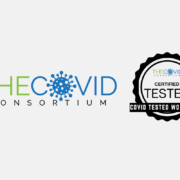Reopening for Business: A COVID Tested Workplace Program
To help businesses reopen safely, CopernicusMD, a leader in medical, laboratory and billing analytics, has launched The COVID Consortium, a one-stop, onsite COVID-19 testing solution to provide employees and customers with confidence to return to the office and reengage in the marketplace.
Led by Brigadier General Nolan Bevins and Dr. Ellen Shaver, The COVID Consortium is a nationwide network of high-complexity molecular and diagnostic laboratories, physicians, clinical specialists, medical staff and business advisors, who are collaborating and pooling their resources from across the U.S. to provide a solution for businesses to access COVID-19 testing to safely return their workforce to the office.
The U.S. Equal Employment Opportunity Commission has provided welcomed guidance to employers, stating that they may require employees, even if asymptomatic, to participate in COVID-19 testing before entering the workplace. Even with this guidance, employers are struggling to understand the types of testing needed to help maintain a safe workplace and the availability of testing for businesses.
Over the last six weeks, our team has heard from countless business owners who are confused about the availability of COVID-19 testing, as well as the ongoing safety measures and compliance guidelines they need to put into place to safely reopen their workplaces.
The Consortium’s end-to-end program is easy to launch. It offers COVID-19 testing, as well as expert advice on designing workplace policies to mitigate the ongoing threat of contamination. The Consortium will send a team to your workplace or location of choice to set up a collection site and provide test results within 24-48 hours after your employees’ samples have been collected.
The COVID Consortium laboratories utilize industry leading equipment and other diagnostic tools approved under the Emergency Use Authorization (EUA) guidance issued by the Food and Drug Administration (FDA). They use the most accurate tests currently available: The Polymerase Chain Reaction (PCR) tests and the SARS CoV-2 Antibody tests at scale to detect employee infection.
The Consortium provides a COVID-Tested Workplace Certification to participating companies, which sends a message to their employees, customers and competitors that they have chosen safety as their number one priority.
To learn more about the Consortium’s Certified COVID-Tested Workplace program, email us at info@thecovidconsortium.com or visit our website at www.thecovidconsortium.com.
—Dr. Hani El Shawa, PhD, CEO of AlphaGenomix and member of The Covid Consortium





